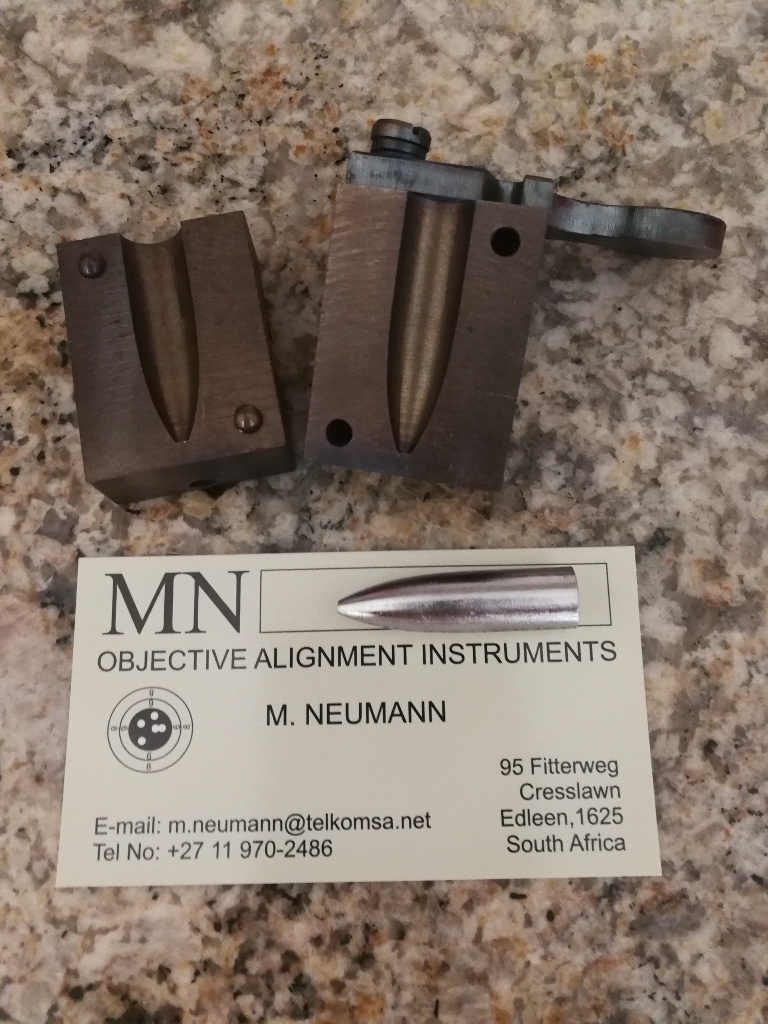Ysterhout Dot Net
My criteria for the mould was that it should be sufficiently over-bore so that after shrinkage, it should still be 3/1000 of an inch too large for the bore. The plan was to powder coat, then size to 2/1000 bigger than bore size.
The only mould I could find commercially available that would give me the necessary over-bore size as-cast, was the Lee .515 mould, that I use for making .500 Jeffery bullets.
For the .375H&H and the .416 Ruger, I had moulds custom made.
Oversize as-cast lead is no problem, any bullet sizer can reduce a lead bullet by 5 thousands of an inch without too much effort required.
My .416 bullets are cast .426 at the base. I size in two passes, the first reduces to .421, the second brings it a shade under .417 .
The other very important point is the bullet weight. I chose to go heavy, so that even at reduced velocity, I approximate the power factor for the caliber. The reason for not chasing velocity is to reduce the possibility of the bullet stripping in the rifling, which will happen if the velocity is too high and the lead alloy too soft.
For reference, black powder rifles shoot under 1400 fps to prevent the bullet stripping in the rifling.
A good investment is a custom bullet mould made for your purpose. The cost of the mould can be recouped from the price of 50 factory bullets for your big bore.
Always good to know a custom mould maker.




